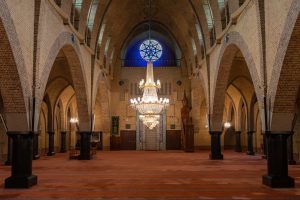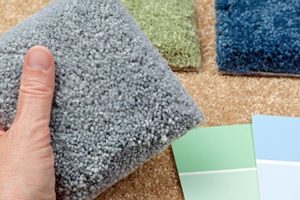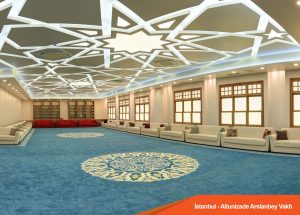When choosing a mosque carpet, evaluating the differences between wool and synthetic materials plays an important role in making the most appropriate choice for the prayer area. Wool carpets are known for being natural and durable; thanks to their moisture balancing feature, they provide a cool feeling in summer and a warm feeling in winter. In addition, wool fibers offer durability by maintaining their form for many years thanks to their flexibility. However, wool carpets are generally more costly and require regular maintenance. Synthetic carpets, on the other hand, are made of materials such as acrylic, polyester or nylon and are more affordable. They are suitable for intensive use with their stain-proof and easy-to-clean features and are more resistant to water and moisture. In terms of acoustics and comfort, synthetic carpets can be as comfortable as wool carpets when supported with additional padding. As a result, while wool carpets are more advantageous in terms of aesthetics and longevity, synthetic carpets stand out in terms of budget-friendly and practical use. The most appropriate choice should be made by considering the number of people in the mosque and maintenance requirements.
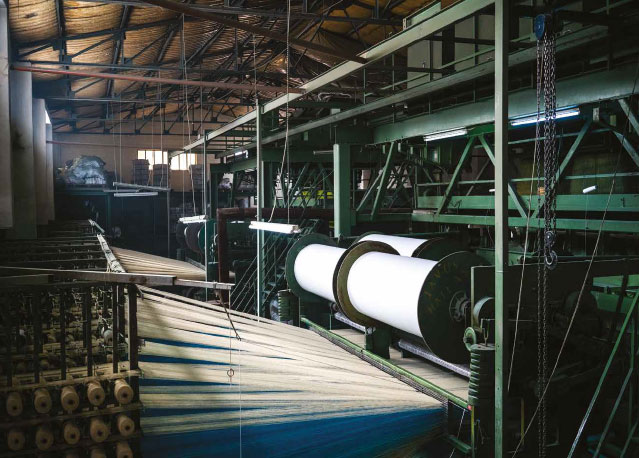
Wool vs. Synthetic Mosque Carpets: Key Differences in Durability and Wear Resistance
Wool and synthetic mosque carpets offer different advantages in terms of durability and wear resistance. Wool carpets are resistant to crushing and deformation thanks to their natural fiber structure. Their flexible fibers maintain their original shape even after intensive use, providing long-lasting use. In addition, wool carpets do not trap dust and dirt, so they remain durable for years when maintained regularly. However, they can be sensitive to moisture and insects and require special care.
Synthetic carpets are made of materials such as nylon, acrylic or polyester and are highly resistant to wear. Nylon-based carpets, in particular, resist crushing in mosques with heavy human traffic. While synthetic carpets provide advantages with their stain-proof and easy-to-clean features, they have disadvantages such as their fibers hardening and losing their shine over time. While synthetic carpets may be advantageous in terms of budget and ease of maintenance for mosques exposed to intensive congregational use, wool carpets may be a better option in terms of aesthetics and longevity.
Comfort Comparison: How Wool and Synthetic Mosque Carpets Affect Prayer Experience
Wool and synthetic mosque carpets show significant differences in terms of the comfort they offer during prayer. Wool carpets provide a soft and flexible surface thanks to their natural fiber structure, leaving a comfortable feeling on the knees and feet. In addition, thanks to the temperature balancing feature of wool, it provides a cool ground feeling in the summer and a warm ground feeling in the winter. This supports joint health during long prostrations and sitting, providing extra comfort to worshippers.
Synthetic carpets can have different hardness levels depending on their materials. Nylon and polyester carpets generally provide a harder surface feeling, while acrylic-based synthetic carpets can be softer. Synthetic carpets can offer a comfort similar to wool carpets when supported with extra filling layers. However, their fibers can harden over time, which can make them less supportive for the knees and feet in long-term use. In general, while wool carpets stand out with their natural softness and supportive structure in terms of comfort, synthetic carpets can be preferred as an affordable and easy-to-maintain alternative.
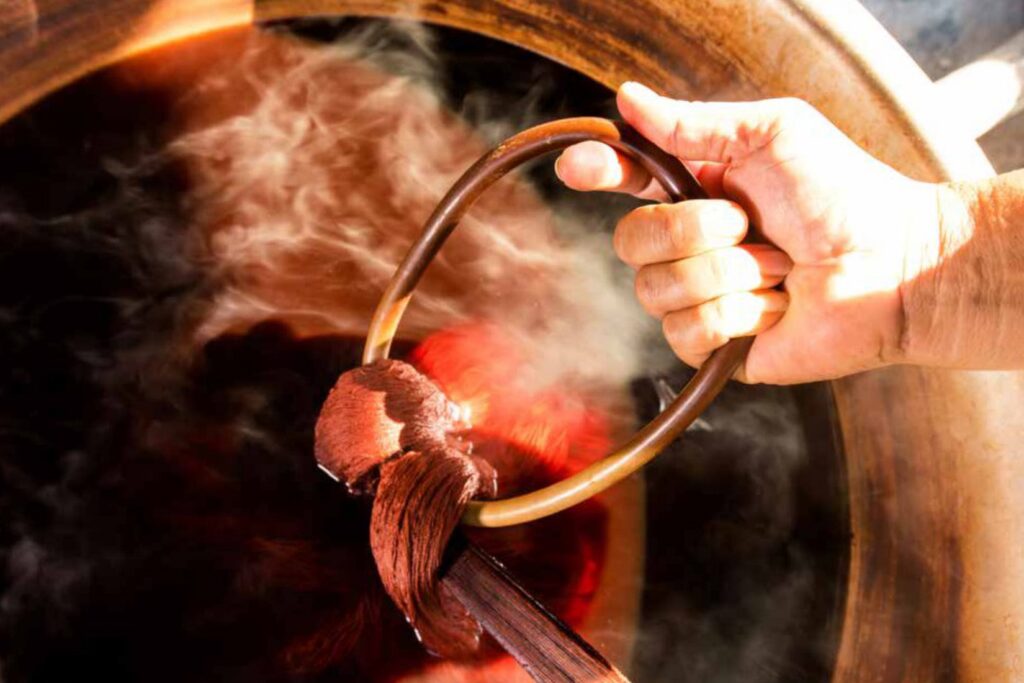
Why Wool is the Premium Choice for Prestigious Mosques
Wool carpets are considered the first-class choice in large and prestigious mosques because they have many advantages, both aesthetic and functional. Due to their natural structure, they have antibacterial properties, thus creating a hygienic prayer area. In addition, wool carpets do not catch fire or produce static electricity, making them a safe option. Thanks to their high-density fibers, they are extremely resistant to abrasion, which allows them to maintain their form and quality for many years.
Wool carpets have been preferred in Ottoman, Iranian and Arab mosques throughout history. Wool carpets, combined with artistic hand-woven motifs, have added aesthetic value to mosques and have been in harmony with traditional architecture. This heritage continues today, and wool carpets are used especially in historical and large mosques. While increasing comfort by providing natural warmth and softness to worshippers, it also offers an economical investment with its long-lasting structure. Wool is an ideal choice for prestigious mosques in terms of both aesthetics and durability.
When to Choose Synthetic Mosque Carpets: Pros and Cons
Synthetic mosque carpets offer many advantages in terms of cost and ease of use, but they also bring some disadvantages. Synthetic carpets are usually made of polyester, nylon or acrylic materials and are much more affordable than wool carpets. These features make them an ideal option for budget-limited mosques, prayer rooms and areas with heavy human traffic. They can also easily adapt to mosque decoration by offering a wide range of color and pattern options.
Synthetic carpets are also advantageous in terms of maintenance; they are stain-proof, easy to clean and less affected by moisture. However, they have some disadvantages in terms of comfort in the long term. Synthetic fibers can harden over time, cause static electricity and have lower wear resistance than wool carpets. For this reason, while synthetic carpets are suitable for small prayer rooms or temporary solutions, wool carpets can be a better investment in mosques that require prestigious and long-lasting use. Synthetic mosque carpets should be preferred when budget and practicality are at the forefront.
Cost vs. Longevity: Which Mosque Carpet is the Better Investment?
When choosing a mosque carpet, cost and longevity factors should be carefully considered. Although wool carpets are initially expensive, they can be used for many years without deformation thanks to their natural durability. In addition, wool’s self-cleaning feature and flame retardant structure reduce maintenance costs and provide long-term savings.
On the other hand, synthetic carpets can be obtained at a lower cost and can be an attractive option for mosques with limited budgets. However, synthetic materials can wear out over time, causing problems such as color fading and hardening of the fibers. This means that they need to be replaced at certain intervals, which can lead to increased costs in the long term. If the mosque is a large area with a large congregation and an investment that will last for many years is sought, wool carpets are more advantageous. However, if a budget-friendly and short-term solution is sought, synthetic carpets can be a suitable alternative.
Wool vs. Synthetic Mosque Carpets: Cleaning and Maintenance Guide
The cleaning and maintenance of wool and synthetic mosque carpets vary depending on the material structure. Wool carpets are resistant to stains thanks to their natural oil content and keep dust on their surface instead of trapping it inside, which makes them easy to clean with regular vacuuming. However, since wool carpets can absorb moisture, the drying process should not be neglected. Professional steam cleaning or dry cleaning methods are the most suitable deep cleaning options for wool carpets.
Synthetic carpets, on the other hand, are stain-resistant, but their fiber structure may deteriorate over time. They are more resistant to chemical cleaners, but excessively hard brushing or hot water use can deform synthetic fibers. Regular vacuuming, rapid intervention when stains occur, and periodic professional cleaning are effective in extending the life of synthetic carpets in daily maintenance. No matter which type of carpet is chosen, both hygiene is ensured and the life of the carpet can be extended with correct maintenance practices.
Eco-Friendliness and Sustainability: Which Carpet is the Greener Choice?
Choosing carpets for eco-friendly mosque projects is of great importance in terms of sustainability. Wool carpets are made from sheep wool, a completely natural resource, and are biodegradable. In addition, since wool carpets are long-lasting, they do not need to be replaced frequently, which reduces waste. They are an environmentally friendly choice since there are fewer chemical processes in the production process. Wool, a naturally renewable resource, can be obtained sustainably without harming the ecological balance.
On the other hand, synthetic carpets are usually produced from petroleum derivatives and the production process can leave a high carbon footprint. Since recycling opportunities are limited, they can harm the environment at the end of their life. However, some modern synthetic carpets can offer eco-friendly alternatives since they are made from recycled plastics. However, in general, from a long-term sustainability perspective, wool carpets are a greener choice for mosques with their natural, durable and biodegradable structure.
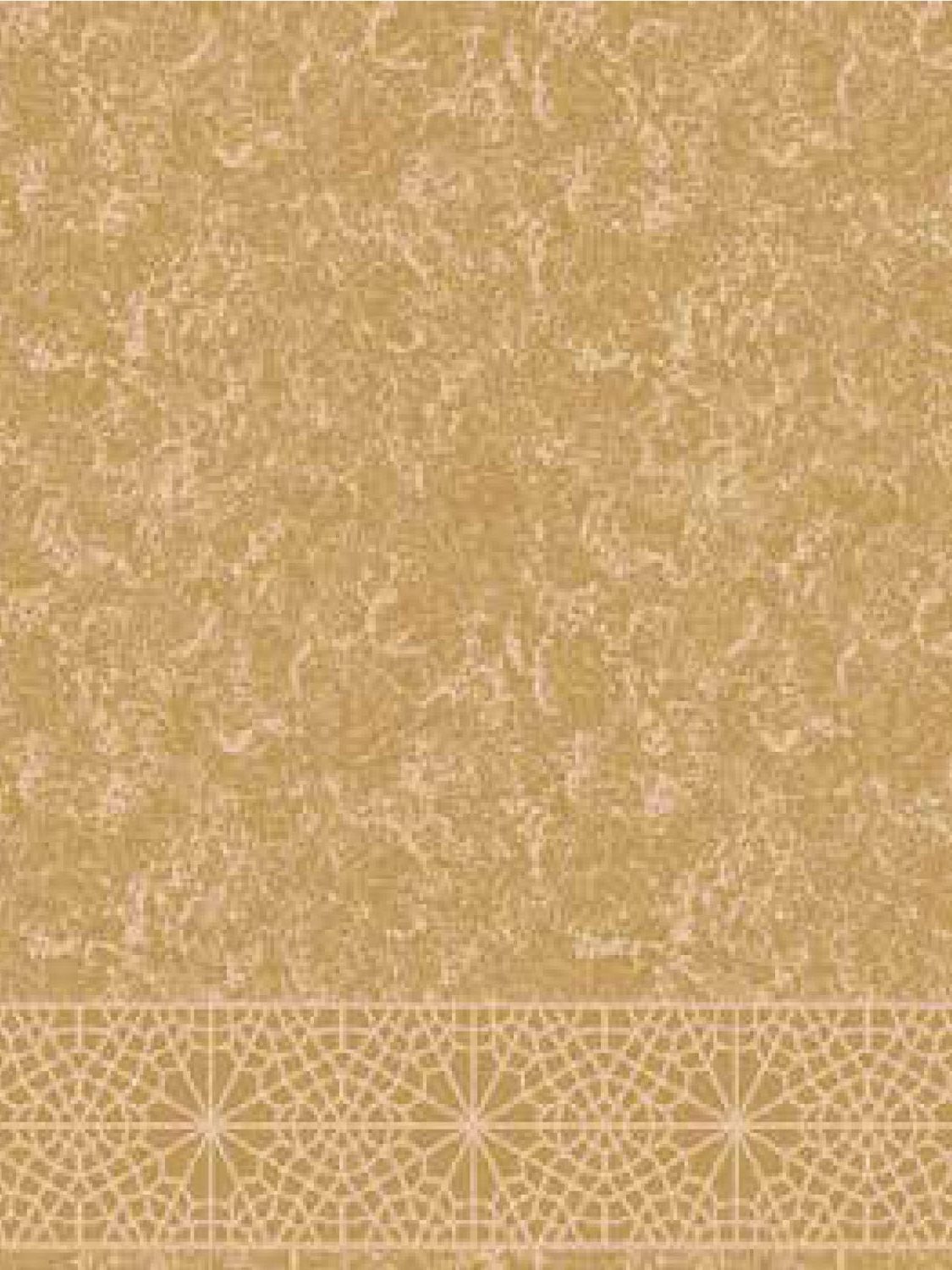
How to Choose the Right Carpet for Your Mosque Based on Traffic and Usage
When choosing a mosque carpet, the density of the congregation and the frequency of use should be taken into consideration. Synthetic carpets can be an economical and practical option for small mosques or areas suitable for light use. These carpets stand out with their low cost and wide range of colors. However, when exposed to intensive use, problems such as wear and color fading may occur over time.
In large and constantly used mosques, wool carpets stand out as a better investment in the long term. Wool is resistant to wear due to its natural structure, does not deform and maintains its aesthetic appearance for many years. In addition, it improves the air quality of the interior by regulating air circulation. In large mosques where congregations constantly pray, high-density wool carpets that are resistant to heavy traffic, easy to clean and comfortable are the ideal choice. The right carpet selection should be made depending on the purpose of use of the mosque and the density of the congregation, and both comfort and durability should be considered.
Sound Absorption in Mosque Carpets: Does Wool or Synthetic Perform Better?
The effect of mosque carpets on sound absorption depends on the material used and the density of the carpet. Wool carpets absorb sound waves better thanks to their natural fiber structure, reducing echo and creating a quieter, more peaceful environment inside the mosque. Especially in large mosques, wool carpets are the best option to minimize echo caused by stone or marble floors.
Synthetic carpets, on the other hand, are generally thinner and lighter, so their sound absorption capacity is lower than wool. However, their performance can be increased by adding sound-insulating filling materials underneath. While wool carpets with high fiber density are preferred to prevent sound from dispersing in areas of heavy use, synthetic carpets can be an economical alternative for small mosques or light-use areas with budget constraints. In order to get the best acoustic results, the density, thickness and underfill material of the carpet should be evaluated together.
Traditional vs. Modern Mosque Carpets: Wool or Synthetic for Contemporary Mosques?
Traditional hand-woven wool carpets stand out with their aesthetic and spiritual value. These carpets, which adorned the interiors of mosques during the Ottoman and Safavid periods, have historical significance with their high artistic workmanship and natural materials. Wool carpets contribute to the atmosphere of the mosque not only with their durability but also with their historical depth in Islamic culture. These carpets preserve the aesthetics and spiritual atmosphere of the space without deforming for many years even with intensive use.
However, synthetic carpets have become a more common choice in today’s modern mosques. Synthetic carpets are generally more cost-effective, easy to maintain and offer a wide range of color options. In addition, thanks to modern production techniques, synthetic carpets can be made high-density and durable. Synthetic carpets tend to be preferred in large mosques and areas with heavy congregational traffic.
While more functional and economical preferences come to the fore in modern mosques, the artistic and spiritual depth of wool carpets still holds a very valuable place in traditional mosques. The type of carpet to be preferred may vary depending on the purpose of use, design and budget of the mosque.

